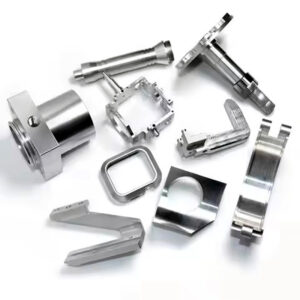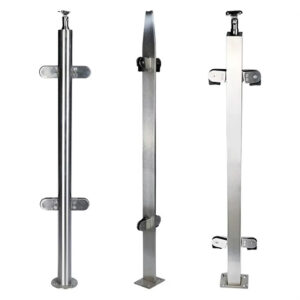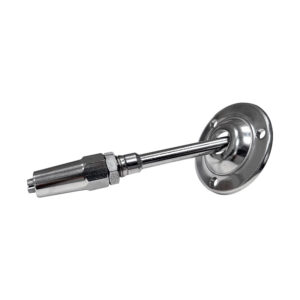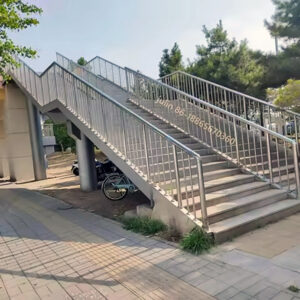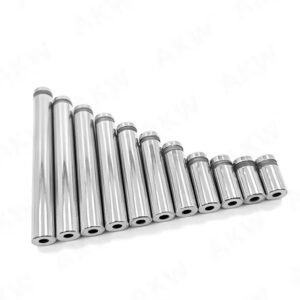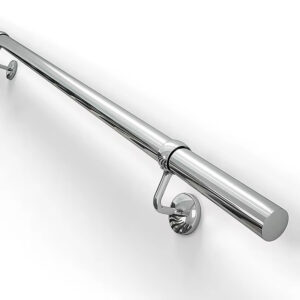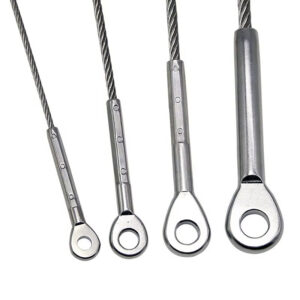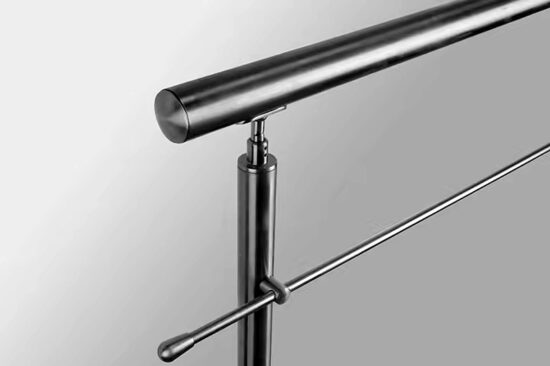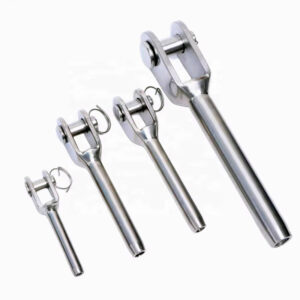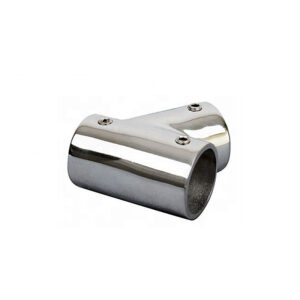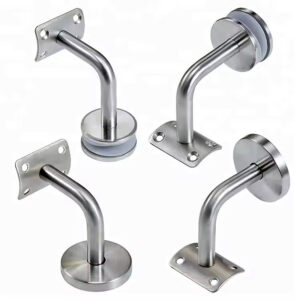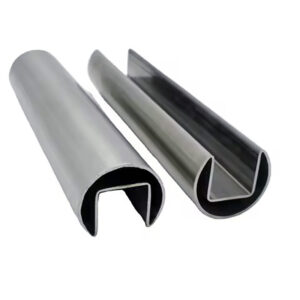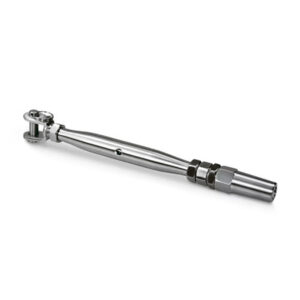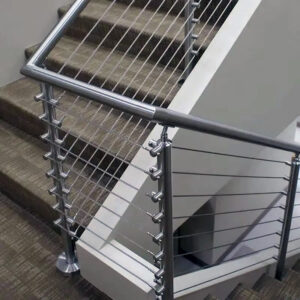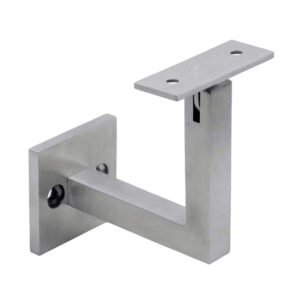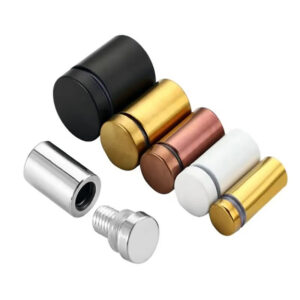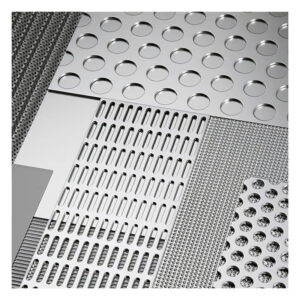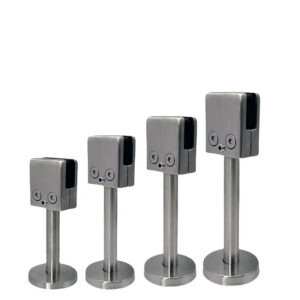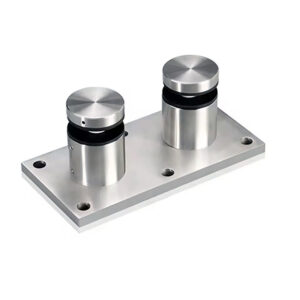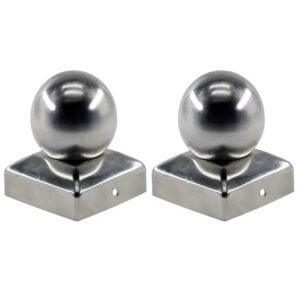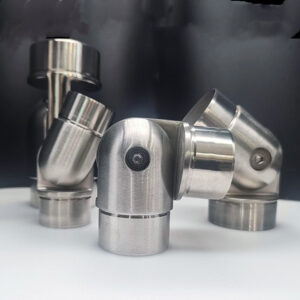Finding reliable railing systems that meet code requirements while staying within budget shouldn’t require a PhD in metallurgy. After 23 years in stainless steel manufacturing, we’ve learned what contractors, distributors, and engineers actually need: components that fit correctly, install efficiently, and perform consistently over time. Public building compliance rails demand more than basic functionality—they need proven durability, straightforward installation, and long-term value that makes sense for your bottom line.
Complete System Solutions That Actually Work Together
Handrail Systems for Every Application
Our modular handrail components cover wall-mounted, post-mounted, surface, and continuous mounting configurations. Standard 304 stainless construction handles most interior applications, while 316L stainless provides superior corrosion resistance for coastal or high-moisture environments. Wall return options and ADA-compliant profiles ensure code compliance without custom fabrication delays.
▶ Get Complete Product Specifications ◀
Railing Posts & Structural Components
Public building fabrication 316L grade components provide the structural foundation for demanding applications. Square and round post options from 1.5″ to 4″ accommodate different load requirements and architectural preferences. Adjustable base plates simplify installation on uneven surfaces, while through-post cable systems eliminate welding requirements for faster assembly.
Glass Railing Hardware Systems
Commercial public building systems increasingly specify glass panels for visual openness while maintaining safety barriers. Our glass clamps, spigots, and standoff systems work with 10mm to 19mm tempered glass panels. Structural glazing gaskets and stainless steel contact points prevent stress concentrations that cause panel failure over time.
Cable Railing Integration
ODM public building railing manufacturing capabilities extend to complete cable systems with pre-cut cables, swageless fittings, and tension adjustment hardware. Through-post cable routing eliminates visible hardware interruptions while simplifying maintenance access. Standard 1/8″ and 3/16″ cable diameters meet most code requirements for spacing and load capacity.
| Component Type | Material Options | Load Capacity | Installation Method |
|---|---|---|---|
| Wall Handrails | 304/316 Stainless | 200 lb/linear ft | Bracket mounting |
| Glass Clamps | 316 Stainless | 50 lb/sq ft wind load | Structural glazing |
| Cable Fittings | 316 Stainless | 200 lb point load | Through-post system |
| Post Systems | 304/316 Stainless | 50 lb/linear ft rail | Surface/core mount |
Material Selection That Makes Sense
Custom public compliance railings require material choices based on actual environmental conditions, not generic specifications. Interior applications typically perform well with 304 stainless in brushed finish, providing durability at reasonable cost. Exterior installations, especially within 10 miles of saltwater, justify 316L stainless investment through extended service life and reduced maintenance requirements.
Technical Performance Data
Understanding actual performance requirements prevents over-specification waste and under-specification failures. Load requirements vary significantly between residential, commercial, and industrial applications, with public buildings typically requiring higher safety factors due to occupancy density.
| Application | Required Load | Material Grade | Expected Service |
|---|---|---|---|
| Residential Stairs | 200 lb concentrated | 304 Stainless | 20+ years |
| Commercial Balcony | 50 lb/sq ft uniform | 304/316 Stainless | 25+ years |
| Public Walkways | 50 lb/sq ft + 200 lb point | 316 Stainless | 30+ years |
| Coastal Installations | Standard + corrosion | 316L Stainless | 25+ years |
“Proper material selection typically extends railing system life by 40-60% compared to minimum specification approaches.” —National Association of Architectural Metal Manufacturers
Real Project Applications and Results
Multi-Unit Residential Development
A 150-unit apartment complex in Phoenix required balcony railings meeting IRC and IBC requirements while maintaining construction schedule efficiency. Modular 304 stainless systems with pre-fabricated sections reduced installation time from 3 days per building to 1.5 days, cutting labor costs by approximately $8,000 per building phase.
Standard glass panel systems provided required safety barriers while maximizing unit views. Through-post cable backup systems eliminated welding requirements, allowing installation by general contractors rather than specialized metal fabricators.
Commercial Office Complex
Precision public building components handled a 12-story office building requiring both interior stair railings and exterior balcony systems. Mixed material specification used 304 stainless for interior applications and 316 stainless for exterior exposure, optimizing performance while controlling material costs.
Modular design allowed inventory pre-positioning, reducing project timeline by two weeks during peak construction scheduling. Standardized mounting hardware simplified structural coordination with concrete and steel frame systems.
▶ Discuss Your Project Requirements ◀
Industrial Manufacturing Facility
A food processing plant required railings meeting both OSHA industrial standards and FDA sanitary requirements. 316L stainless construction with electropolished finish provided necessary corrosion resistance and cleanability for washdown environments.
Custom fabrication capabilities handled non-standard platform configurations while maintaining component standardization for maintenance efficiency. Installation coordination with mechanical systems reduced total project duration and eliminated rework delays.
Marine and Coastal Applications
A waterfront hotel project required railing systems capable of withstanding salt spray exposure while maintaining aesthetic appeal over extended service periods. 316L stainless construction with specialized surface treatments provided necessary durability for direct oceanfront installation.
Cable railing systems reduced wind loading on structural supports while meeting code requirements for barrier height and intermediate rail spacing. Pre-tensioned cable assemblies simplified installation and eliminated field adjustment requirements.
| Project Type | Timeline Improvement | Cost Efficiency | Service Expectation |
|---|---|---|---|
| Residential Multi-unit | 50% faster installation | 15-25% labor savings | 20+ year performance |
| Commercial Office | 2-week schedule reduction | 10-15% total cost savings | 25+ year performance |
| Industrial Facility | Concurrent installation | Maintenance cost reduction | 30+ year performance |
| Marine/Coastal | Weather-independent setup | Long-term value optimization | 25+ year performance |
Installation Support and System Integration
Modular Assembly Advantages
Our 23 years of manufacturing experience has shown that field assembly time directly impacts project profitability. Modular component systems reduce installation complexity while maintaining structural performance requirements. Standard connection details eliminate field welding for most applications, allowing installation by general contractors with basic tools.
Pre-fabricated sections accommodate standard architectural dimensions while providing adjustment capability for field conditions. Component compatibility across different system types allows mixed applications within single projects, simplifying inventory management and reducing learning curve requirements.
Quality Control That Prevents Problems
Manufacturing precision ensures components fit correctly the first time, eliminating field modification delays and associated labor costs. Dimensional tolerances meet architectural standards while maintaining structural requirements for safety code compliance.
▶ Connect with Our Technical Team ◀
Surface finishing consistency provides uniform appearance across large installations without color matching complications common with field-applied finishes. Pre-assembly testing verifies component compatibility before shipping, preventing installation delays due to fit-up problems.
Technical Support When You Need It
Installation assistance includes pre-project planning, component selection guidance, and field problem-solving support. Our engineering team works directly with contractors to resolve installation challenges quickly, minimizing project delays and cost overruns.
Design assistance services help optimize system selection for specific applications, balancing performance requirements with budget constraints. Technical documentation provides clear installation procedures, reducing training requirements and improving installation consistency.
Frequently Asked Questions
How do I select appropriate stainless steel grades for different environments?
Interior applications typically perform well with 304 stainless steel, providing good corrosion resistance at reasonable cost. Exterior installations require 316 stainless for improved environmental durability, while coastal applications within 10 miles of saltwater benefit from 316L grade for maximum corrosion resistance. Industrial environments with chemical exposure or high humidity conditions generally justify 316L investment through reduced maintenance requirements.
What installation tools and skills are required for modular systems?
Standard installation requires basic construction tools: drill, level, measuring equipment, and standard fasteners. Most systems install with mechanical connections rather than welding, allowing general contractors to handle installation. Complex configurations or structural modifications may require specialized fabrication, but standard applications typically install with existing crew capabilities.
How do component systems handle non-standard architectural requirements?
Modular components accommodate most architectural variations through adjustable connections and standard dimensional increments. Custom fabrication services handle unique requirements while maintaining component standardization where possible. ODM manufacturing capabilities provide completely custom solutions when standard components cannot meet specific project requirements.
What maintenance is required for long-term performance?
Routine maintenance typically involves periodic cleaning and inspection of connection hardware. Stainless steel components generally require minimal maintenance beyond cleaning for aesthetic purposes. Cable systems may require tension adjustment after initial settling, typically within the first year of installation. Moving components like gates or adjustable features require periodic lubrication of mechanical parts.
How do modular systems compare with fully custom fabrication?
Modular systems typically reduce installation time by 30-50% compared to fully custom fabrication while maintaining structural performance and code compliance. Initial component costs may be slightly higher, but installation savings and inventory advantages usually provide overall project savings. Custom fabrication remains advantageous for unique architectural requirements or when standard components cannot meet specific performance criteria.
What inventory strategies work best for distributors and contractors?
Stock rotation focuses on high-volume standard components with custom items ordered per project requirements. Modular design allows strategic inventory investment in base components with project-specific items added as needed. Our supply chain support includes inventory planning assistance and scheduled delivery coordination to minimize storage requirements while ensuring project schedule compliance.
System Comparison and Selection Guidance
Understanding how different railing solutions perform in actual applications helps optimize selection for specific project requirements and budget constraints. Each approach offers distinct advantages depending on project scale, timeline, and performance priorities.
| Solution Type | Installation Speed | Initial Cost | Long-term Value | Best Applications |
|---|---|---|---|---|
| Modular Systems | Fastest | Moderate | High efficiency | Standard applications |
| Semi-Custom | Moderate | Higher initial | Good performance | Mixed requirements |
| Full Custom | Longest | Highest | Maximum flexibility | Unique specifications |
| Basic Standard | Fast | Lowest | Limited options | Budget-sensitive projects |
“Modular railing systems typically reduce total project costs by 15-25% through installation efficiency gains and reduced field complications.” —Construction Industry Research Board
▶ Start Your Project Discussion ◀
After 23 years in stainless steel manufacturing, Esang Metal has developed systems that work reliably across diverse applications and environmental conditions. Our focus remains on practical solutions that perform consistently, install efficiently, and provide long-term value for contractors, distributors, and building owners.
The right railing system combines appropriate materials, proven installation methods, and ongoing support that keeps projects moving forward profitably. Whether your requirements involve standard commercial applications or specialized industrial environments, modular component systems provide the flexibility and reliability that successful projects demand.
